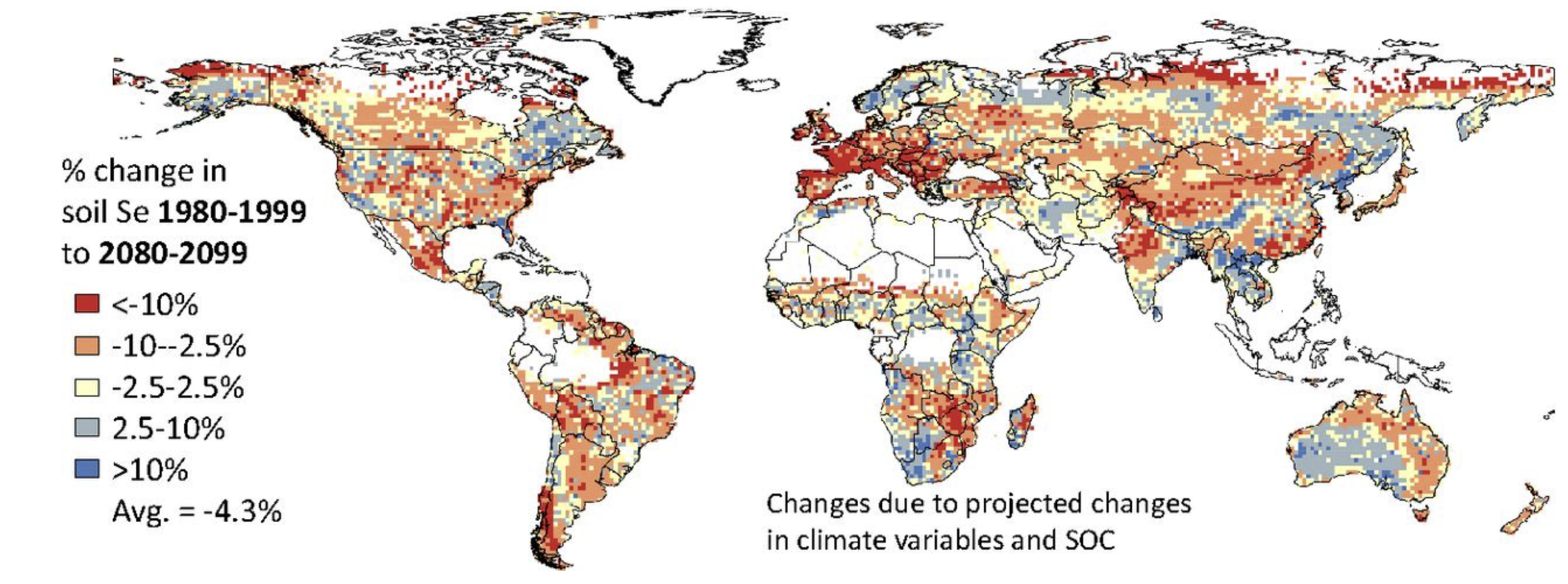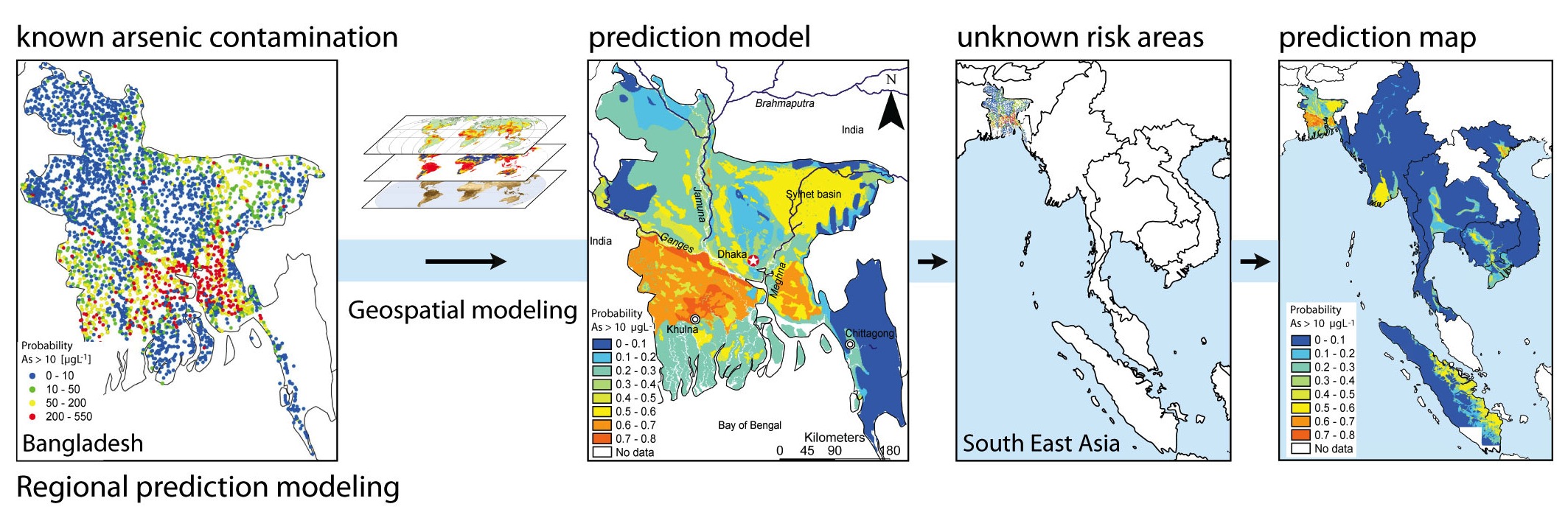Large-scale predictions
To ensure safe trace element levels in the environment, it is not only important to better understand to the processes that govern elemental distributions, but also to be able to predict these distributions. Our group is working on large-scale predictions of trace elements distributions in soils based on specific geochemical process knowledge and GIS-based data such as soil and climate properties, combined with statistical modeling procedures. This work builds upon our previous work by including a more comprehensive multivariate statistical analysis and by considering the dynamic aspects of climate change. The illustration below shows schematically how probability maps for trace elements can be created (example based on external page Winkel et al., 2008 Nature Geoscience).
Global prediction of soil selenium
We used data mining techniques to model soil selenium concentrations using measured soil selenium data from 15 datasets as well as 26 predictor variables. Based on the models, climate variables and their interactions with soil properties were identified as the most important factors driving broad-scale soil selenium concentrations. Given the importance of climate on soil selenium concentrations, a further set of models were made for the years 2080-2099 in order to predict how climate change could influence global soil selenium concentrations by the end of the 21st century. Using moderate climate change scenarios for both climate variables and soil organic carbon, the models predicted future (2080-2099) soil selenium losses from over half (58%) of all modeled areas (mean loss= 8%). Losses from croplands were even higher with 66% of cropland areas that were modeled were predicted to lose ~9% of current soil selenium levels. In addition, 61% of pasturelands that were modeled were predicted to lose ~8% of current soil selenium levels. These losses suggest that the worldwide prevalence of selenium deficiency in humans and livestock could increase.
external page link to the paper

